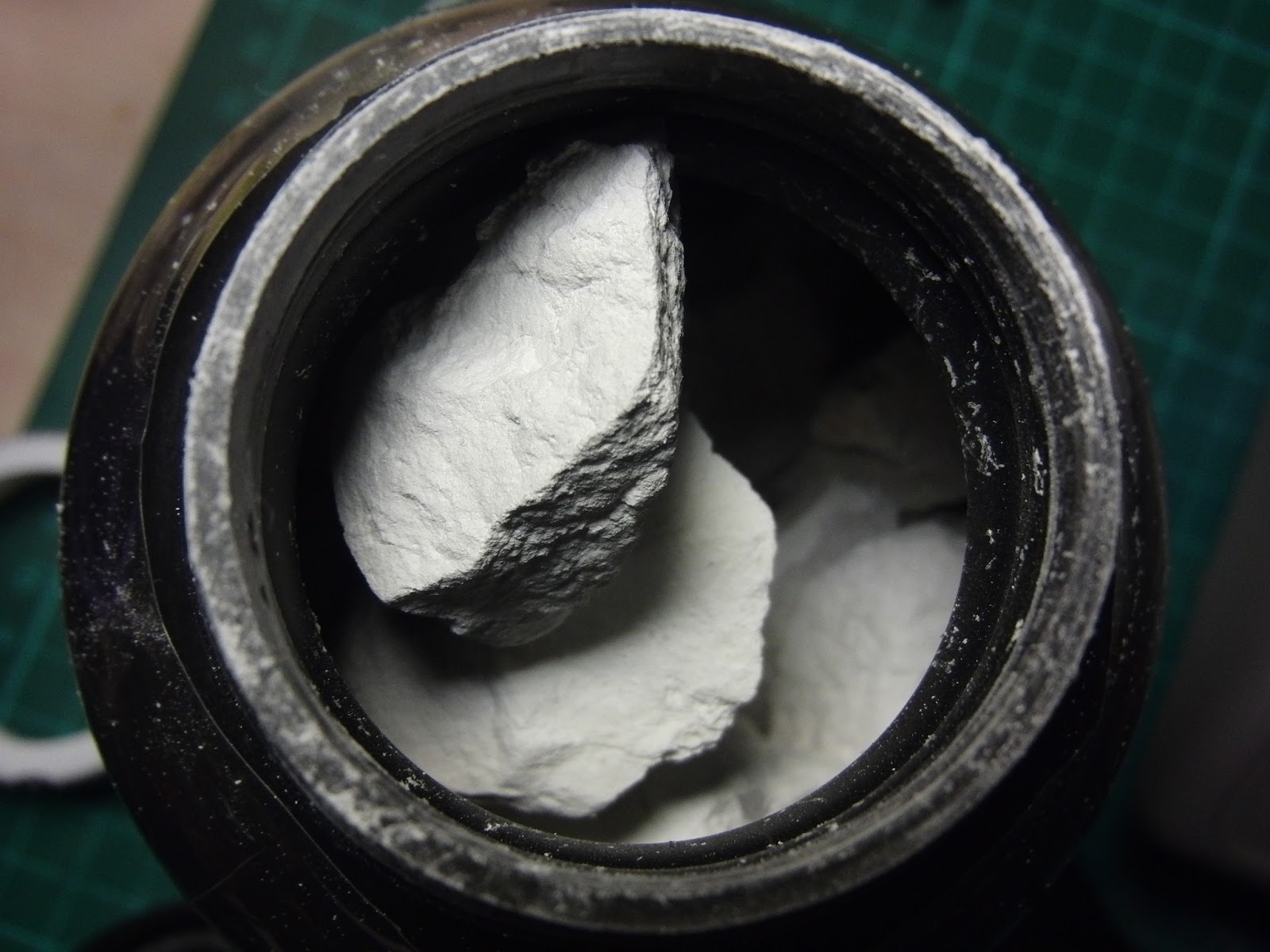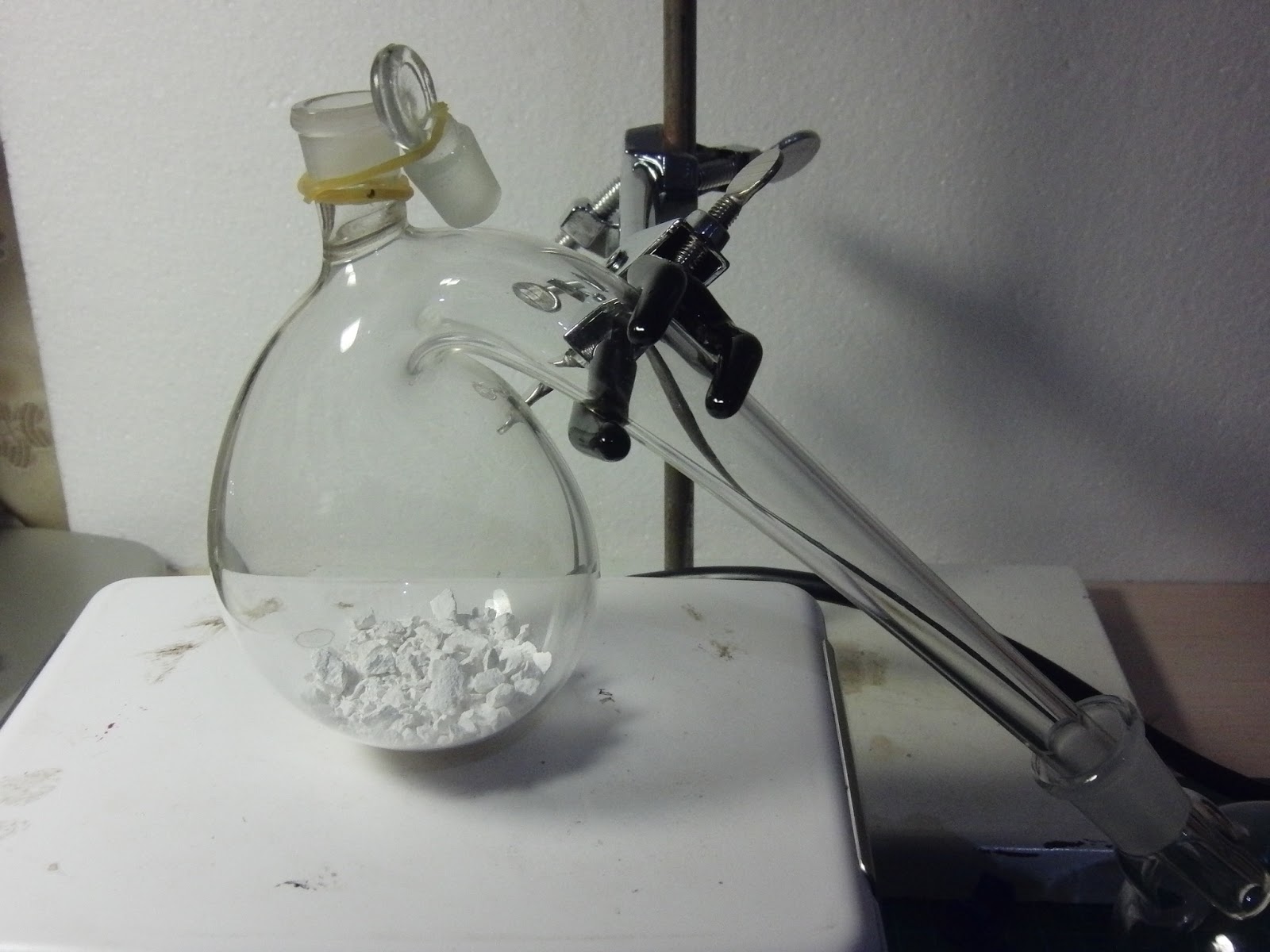Absolute
or anhydrous alcohol refers to ethanol with a low water content. There are
various grades with maximum water contents ranging from 1% to ppm levels.
Absolute alcohol is not intended for human consumption. If azeotropic
distillation is used to remove water, it will contain trace amounts of the
material separation agent (e.g. benzene). Absolute ethanol is used as a solvent
for laboratory and industrial applications, where water will react with other
chemicals, and as fuel alcohol. Spectroscopic ethanol is an absolute ethanol
with a low absorbance in ultraviolet and visible light, fit for use as a
solvent in ultraviolet-visible spectroscopy. (Wikipedia)
In the experiment, we are going to use
calcium oxide(quicklime) to remove the water from 95% ethanol by distillation.
Calcium oxide forms calcium hydroxide when
it attach water, and calcium hydroxide would lose water only when the temperature
is higher than 580℃ so that we can obtain 99.5% absolute alcohol.
CaO(s) + H2O(l) → Ca(OH)2 (s)
Chemical
1.
95% ethanol: 150mL
2.
Calcium oxide(quicklime):
10~15g
Calcium oxide is so called quicklime
Smash the block into small pieces
Procedure
1.
Set up the distillation
apparatus
2.
Place 10~15g calcium oxide and
a stir bar in the flask
3.
Pour 150mL 95% ethanol into the
flask, start to stir and distill the mixture.
4.
Collect about 100~120mL distillate.
5.
The final product should be
very clean and colorless. Store it in a flask and seal the stopper with some
grease because the 99.5% absolute alcohol is easily deliquescence.
Absolute alcohol is very clean
A huge amount of calcium hydroxide and calcium oxide precipitate
It is a jelly mixture









Sir nice idea to synthesis of phenytoin...thanks
ReplyDeleteSir nice idea to synthesis of phenytoin...thanks
ReplyDeleteDon't you think that water from air and water bath(?!) can dissolve in your "absolute" ethanol during the process??
ReplyDeleteThat's why they say 99.5% not 100%
ReplyDelete